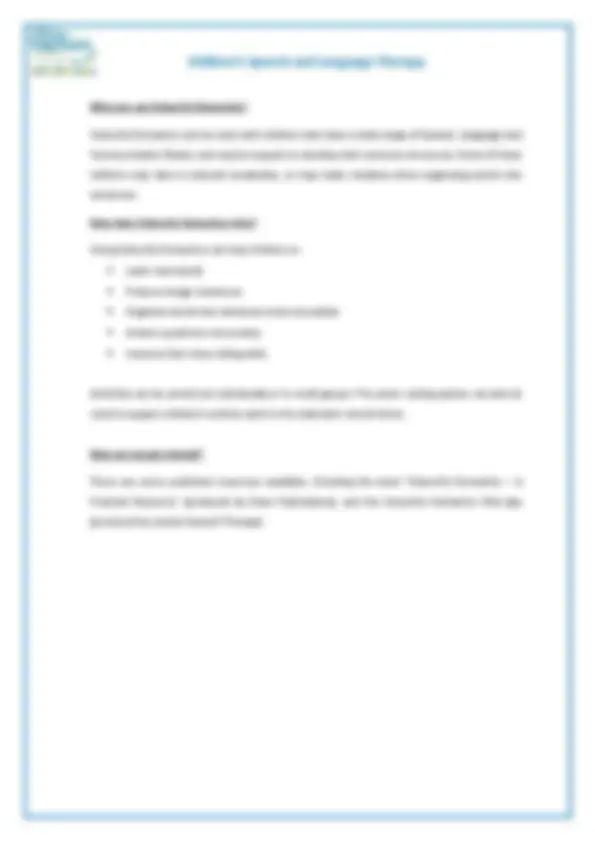



Study with the several resources on Docsity

Earn points by helping other students or get them with a premium plan


Prepare for your exams
Study with the several resources on Docsity

Earn points to download
Earn points by helping other students or get them with a premium plan
Community
Ask the community for help and clear up your study doubts
Discover the best universities in your country according to Docsity users
Free resources
Download our free guides on studying techniques, anxiety management strategies, and thesis advice from Docsity tutors
The Colourful Semantics approach was created by Speech and Language Therapist Alison Bryan. It uses colour coding to help children to develop their sentence ...
Typology: Study notes
1 / 2

This page cannot be seen from the preview
Don't miss anything!


The Colourful Semantics approach was created by Speech and Language Therapist Alison Bryan. It uses colour coding to help children to develop their sentence building skills.
How does it work? Colours are used to help children to identify the important elements in sentences, and learn how to put these together in the correct order. Children are gradually taught to associate different ‘types’ of words with particular colours, in a step-by-step approach. The colour coded elements can then be used to build sentences which range from simple combinations of two to three words, to longer and more complex sentences.
For example, the colour coded strip below shows the colours used for the elements:
This prompt would be used with a child who was working on creating sentences such as “The man is eating an ice cream in the park”
“The girl is drawing a picture at school”.
Who can use Colourful Semantics?
Colourful Semantics can be used with children who have a wide range of Speech, Language and Communication Needs, and require support to develop their sentence structures. Some of these children may have a reduced vocabulary, or may make mistakes when organising words into sentences.
How does Colourful Semantics help?
Using Colourful Semantics can help children to:
Activities can be carried out individually or in small groups. The colour coding system can also be used to support children’s written work in the classroom and at home.
How can we get started?
There are some published resources available, including the book “Colourful Semantics – A Practical Resource” (produced by Stass Publications), and the Colourful Semantics iPad app (produced by London Speech Therapy).